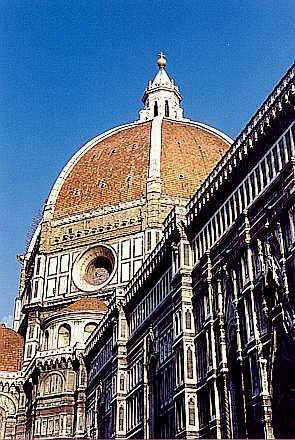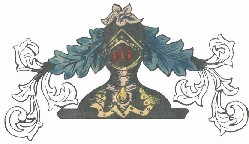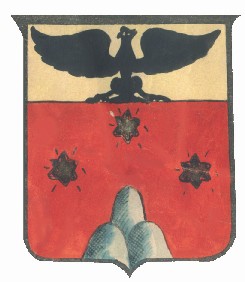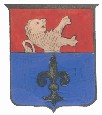|
Itinerary : His
majesty Brunello, Mediaeval landascapes
Toscana
middle Italy
Description
of the itinerary
The symbolic gatehouse to
the kingdom of Brunello is without doubt the magnificent city of
Siena, cradle of Italian art on the old pilgrim route from France to
Rome, the Via Francigena. Leaving Siena by the south the route then
winds towards Murlo, Pienza, to Montalcino itself.
Amidst the Crete, the unique landscape of sandy hills eroded into
shape by antediluvian waters, the old fortress of Montalcino is the
last outpost of Sienese territory before reaching the woods of the
Maremma and the heights of Monte Amiata. This is the setting for one
of Italy’s most famous and most important wines, the first wine to
compete on the stage of international wines for auction and for laying
down in the cellar.
Wines: Brunello
di Montalcino Moscadello
di Montalcino
Specialities: Raviggiolo
Coppiette
Salsiccia
Pappa
col pomodoro Panforte
di Siena
In
detail:
Siena | Ville di Corsano | Murlo | Trequanda |
Pienza | Montalcino | Monte Oliveto
Siena,
art and tradition
Siena is an archetypal mediaeval city which re-evokes the spirit of
times past every year in the traditional Palio delle Contrade. This
horse race is held in one of Europe’s most beautiful squares, the
sloping shell-shape Piazza del Campo, in a competition between the
various quarters, or contrade, of the city. The Palazzo Pubblico (Town
Hall) stands prominently in the piazza with its magnificent Torre del
Mangia, the tower designed by Minuccio and Francesco di Rinaldo. In
the centre of the piazza is a copy of the Fonte Gaia by Jacopo della
Quercia. Don’t miss the Duomo; Giovanni Pisano designed its lower
facade and Baptistery, where there is also a fine baptismal font by
Jacopo della Quercia. It is also worth visiting the Museo dell’Opera
Metropolitana to see the famous Pala del Maestà by Duccio di
Buoninsegna, and also the Fine Art museum in Palazzo Buonsignori, the
Pinacoteca Nazionale, to see some of the most important Sienese works
of art produced between the XIII and the XVIII century. The famous
Enoteca Italiana di Siena wine centre is located in the old munitions
rooms of the Fortezza Medicea. Over a thousand different wines from
about 500 producers from all over Italy are on show here, put on
display after a rigorous internal selection procedure by wine experts.
Every year in the first ten days of June the Enoteca organises the
“Settimana dei Vini”, one of the regular events in the calendar of
national wine festivals. The Enoteca actively promotes Italian wines
at fairs and exhibitions all over the world and is also active in
publishing books and newsletters on wine.
From
Siena to Ville di Corsano
The Brunello producing area extends over a
series of gentle hills and slopes on one side of the ancient Via
Cassia. Leave Siena on the dual carriageway for Grosseto. After the
first two tunnels the first turning on the left passes through the
country for a while before a right turn and a four-kilometre drive to
Ville di Corsano. Here there is an enormous farm estate and tourist
complex which combines the production of excellent wines with the
possibility of staying in one of the tastefully modernised old
farmhouses.
Etruscan
Murlo
Just outside Siena the little hamlet of Murlo is
a discovery not to be missed: a perfectly preserved mediaeval
settlement with just two gateway entrances in the walls. An especially
good time to visit Murlo is the third week in July for one of
Tuscany’s most unusual festivals, the Festa Etrusca. There are
vineyards all around Murlo producing traditional wines and one local
producer who makes and sells his own wines
Abbey
of Monte Oliveto Maggiore
After Murlo, join the Via Cassia at Buonconvento
again and take the turning off for the Abbey of Monte Oliveto
Maggiore. The eight-kilometre climb up to the abbey passes through
countryside which is ever more typical of the Sienese Crete area. The
abbey complex itself is to be found alone on a high outcrop surrounded
by cypress trees. It was a young Sienese nobleman, Bernardo Tolomei,
who sought the solitude of this hitherto deserted place in the
beginning of the 13th century and founded an order of Benedictines. In
time the abbey became one of the most important in Italy and today it
is the mother house of all the Olivetan Benedictines. The abbey church
was built in the 15th century and contains some notable frescoes by
Luca Signorelli and by Sodoma depicting the Life of Saint Benedict.
There is a shop at the abbey entrance for the sale of herbal liqueurs
and other goods made by the monks; the abbey itself is home to a
famous workshop for the restoration of parchments and ancient books
and can be visited only by researchers.
The
checkerboard church at Trequanda
Leaving Monte Oliveto Maggiore and passing
through San Giovanni d’Asso the route comes to Trequanda, an almost
completely unknown hamlet and a real discovery. A perfectly preserved
13th-century castle dominates the few houses that there are with its
cylindrical crenellated tower. The church in the main Square,
dedicated to Saints Peter and Andrew, is also 13th century and has a
unique black and white stone checkerboard facade. Inside, there is a
wonderful fresco of the Transfiguration by Sodoma.
Pienza,
a designer city
Pienza can be found on the road from Trequanda
to Montalcino and is a superb example of a Renaissance architectural
ensemble. In ancient times it was an obscure village called Corsignano
and belonged to the Piccolomini family, one of whose scions was Enea
Silvio Piccolomini, who became Pope Pius II in 1458. The year after
Piccolomini’s election, he charged the architect Bernardo Rossellino
with the task of rebuilding the entire village, turning it in the
process into a classic Renaissance City. All the most important
buildings in Pienza are grouped around the main piazza, dedicated to
Pius II himself, and designed according to strict considerations of
visual harmony. At the back of the square is the Duomo, with its
collection of altarpieces painted by contemporary Sienese masters, as
well as Rossellino’s own tabernacle. On the left there is the house
of the Duomo clergy, now the Museo d’Arte Sacra, and the ancient
Palazzo dei Priori, now completely restored. On the right there is
Palazzo Piccolomini, the old Papal residence and one of Rossellino’s
masterpieces. Don’t miss the southern side of the building with its
three loggias one on top of each other, affording views over the
valley in front of the town.
Montalcino,
home of the king of wines
From Pienza the road leads to Montalcino via San
Quirico d’Orcia in a brief climb up to the town castle. The wine
producers’ cellars are everywhere, some of them very old, some of
them dating back to the boom in Brunello that started in the 1960s.
The historic centre of Montalcino is composed of a few winding streets
packed with handcraft shops offering their high quality wares. The
producers’ association, Consorzio di Tutela del Brunello, can be
found in the Palazzo Comunale (XIII-XIV century). The facades of the
Town Hall are not only adorned with ceramic and terracotta
coats-of-arms of past town governors, but also with the “formelle
del Brunello”. Every year on the first Saturday of February there is
a ceremony called “Benvenuto Brunello” (“Welcome Brunello”) at
which a new ceramic plaque, a “formella del Brunello”, is embedded
in the wall in honour of the last vintage at the same time as the
verdict of the Consorzio’s official tasting panel on the vintage is
proclaimed. Visit the Museo Civico e Diocesano in the former convent
of Sant’Agostino with its rich collection of masterpieces by the
great Sienese painters, and the imposing castle, which contains an
Enoteca where the various vintages of Brunello can be profitably
tasted
The
golden reflections of Sant’Ántimo
The Abbey of Sant’Ántimo is located in an
isolated little valley at the foot of the Montalcino spur and is one
of Tuscany’s most important historic monuments. The abbey complex is
quite superb. Founded according to legend by Charlemagne, the first
recorded evidence of its existence dates back to 814 AD. Enlarged and
embellished by donations it became one of the most powerful of all
Benedictine abbeys, and in the Middle Ages was one of the greatest
feudal powers in the territory of Siena. Built of travertine stone,
its architectural embellishments are made of onyx, which gives a
certain golden glow to the walls. Inside, the column capitals are
particularly beautiful and depict Biblical stories, fantastical
animals and the like. Sant’Ántimo is also the name of a new DOC
intended for wines other than Brunello produced in the Montalcino area
|




